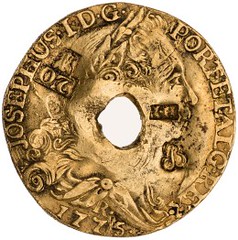
PREV ARTICLE
NEXT ARTICLE
FULL ISSUE
PREV FULL ISSUE
BLACK DOGS AND STAMPEES: THE RESEARCH OF KATHERINE SMOAK
In a December 22, 2015 post on the American Numismatic Society's blog Pocket Change, Matthew Wittmann interviewed visitor
Katherine Smoak about her research into coins and counterfeiting in the eighteenth century. -Editor
What brings to you to the ANS today? I am a Ph.D. candidate at Johns Hopkins University and I came to look at Caribbean coinage. I have been working on an article about counterfeits made in Birmingham and shipped to the Caribbean, mostly of Spanish and Portuguese coins, but also French billon coins. And how did you get interested in numismatics? Initially it came through an interest in crime and punishment in colonial America. I came across counterfeiters in this context and reviewing court records just made me realize how rich this sort of material about coins and paper money was. What sort of material did you look at today? Mostly at trays from the Caribbean cabinet. I am particularly interested in small change used mostly by enslaved peoples like black dogs and stampees. And then I was also looking at some higher value coins like cut Spanish silver and Portuguese gold half-joes that had been variously clipped and plugged. I was really interested in the counterstamps and what that means for different islands as they tried to certify weights and keep coins in circulation amidst a flood of counterfeits. What is a black dog? It was a small French coin that was supposed to be a copper and silver alloy that was sent to the French colonies in the Caribbean, but ended up circulating much more widely. My understanding of them from what I have been reading is that by the 1780s and 1790s, most all of the black dogs in circulation were counterfeits and not the original imported coin. What is circulating is something like a trade token that was being produced en masse in places like Birmingham and shipped to merchants and planters to use as small change. Part of what was so exciting for me looking at the trays today was just to see what these coins I have been reading so much about looked and felt like. Getting to feel how heavy a silver dollar was and how tiny some of the cut pieces are was really great. With the copper coins, seeing how crude and thin and easy they presumably would have been to produce and counterfeit was interesting. Seeing how much counterfeit material there was relative to genuine coin on particular trays was pretty remarkable. The wear and clipping and plugging on the gold joes was pretty amazing and thinking about the tactile interactions with money that people are having and how you can feel when a coin has been altered. Was there a particular coin that you found illuminating?
I was not familiar with the terms black dogs and stampees. Here are some stampees from the ANS collection (follow the link in the article
for more). -Editor
1798 Trinidad and Tobago Copper 1 stampee
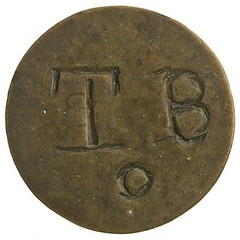 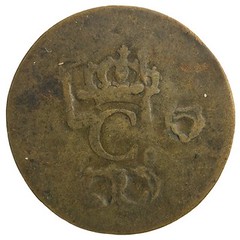
To read the complete catalog description, see:
1800 Trinidad and Tobago Copper 1/2 stampee of Rapsey, H. E.
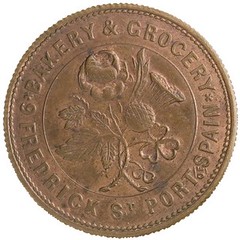 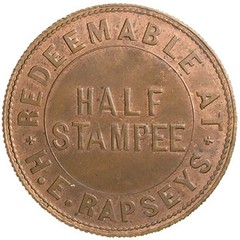
To read the complete catalog description, see:
1870 London (England) Bronze 1 stampee of Declos, Francois
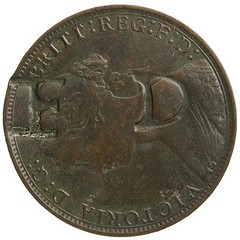 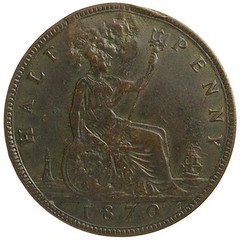
To read the complete catalog description, see:
To read the complete article, see:
Wayne Homren, Editor The Numismatic Bibliomania Society is a non-profit organization promoting numismatic literature. See our web site at coinbooks.org. To submit items for publication in The E-Sylum, write to the Editor at this address: whomren@gmail.com To subscribe go to: https://my.binhost.com/lists/listinfo/esylum All Rights Reserved. NBS Home Page Contact the NBS webmaster 
|

